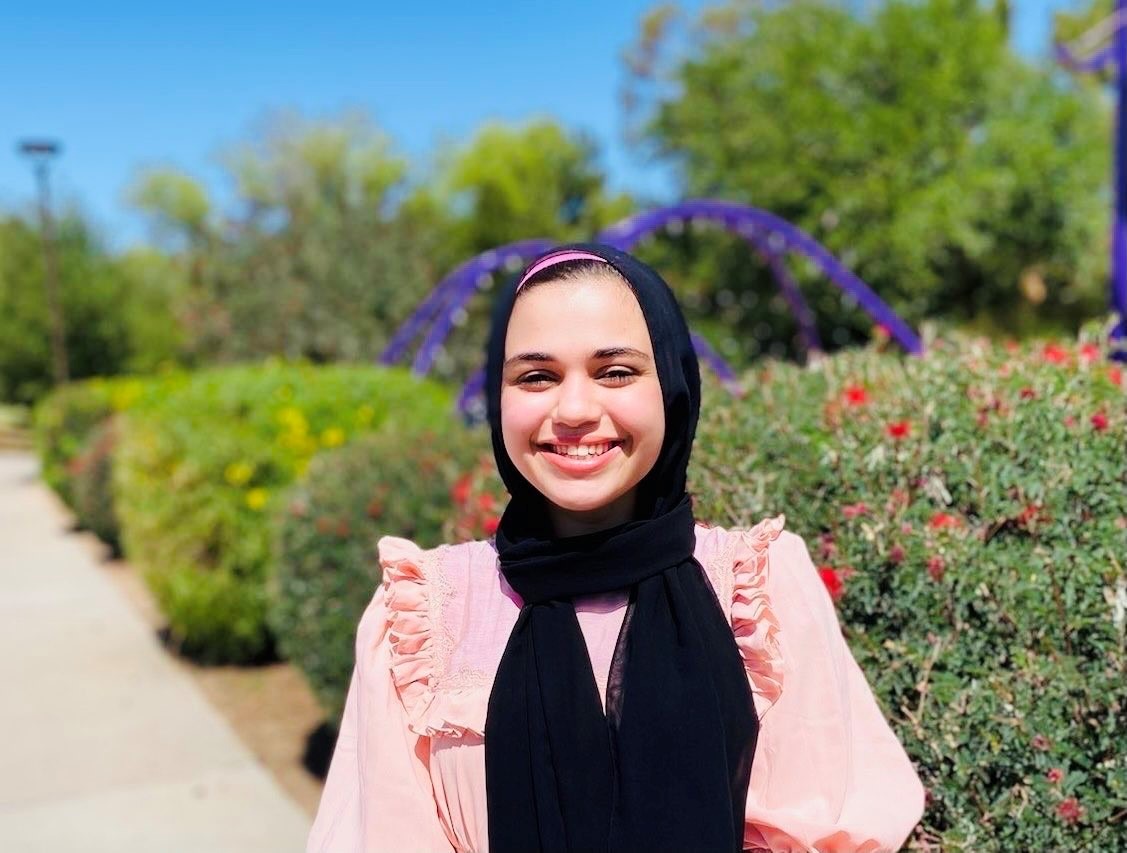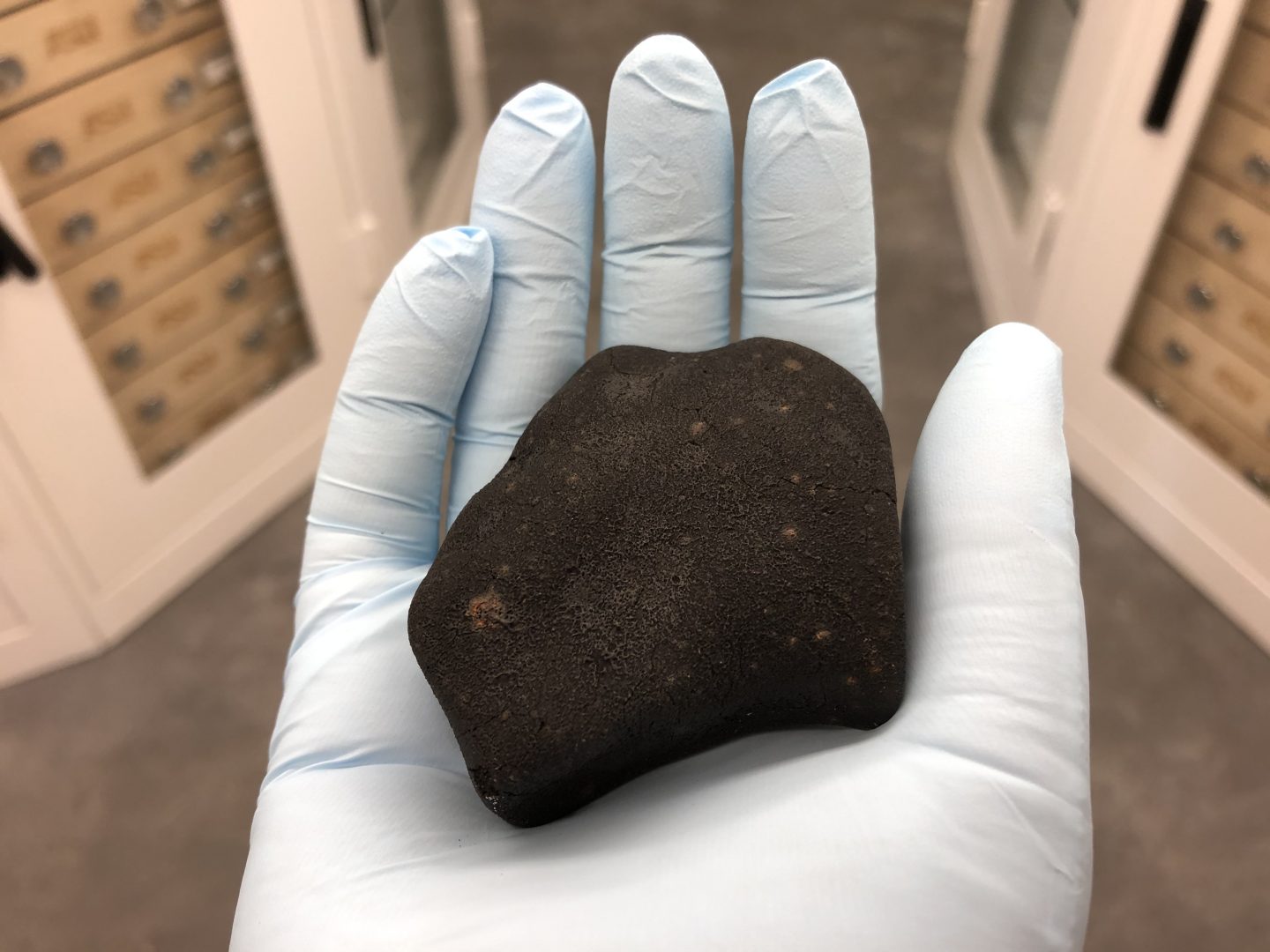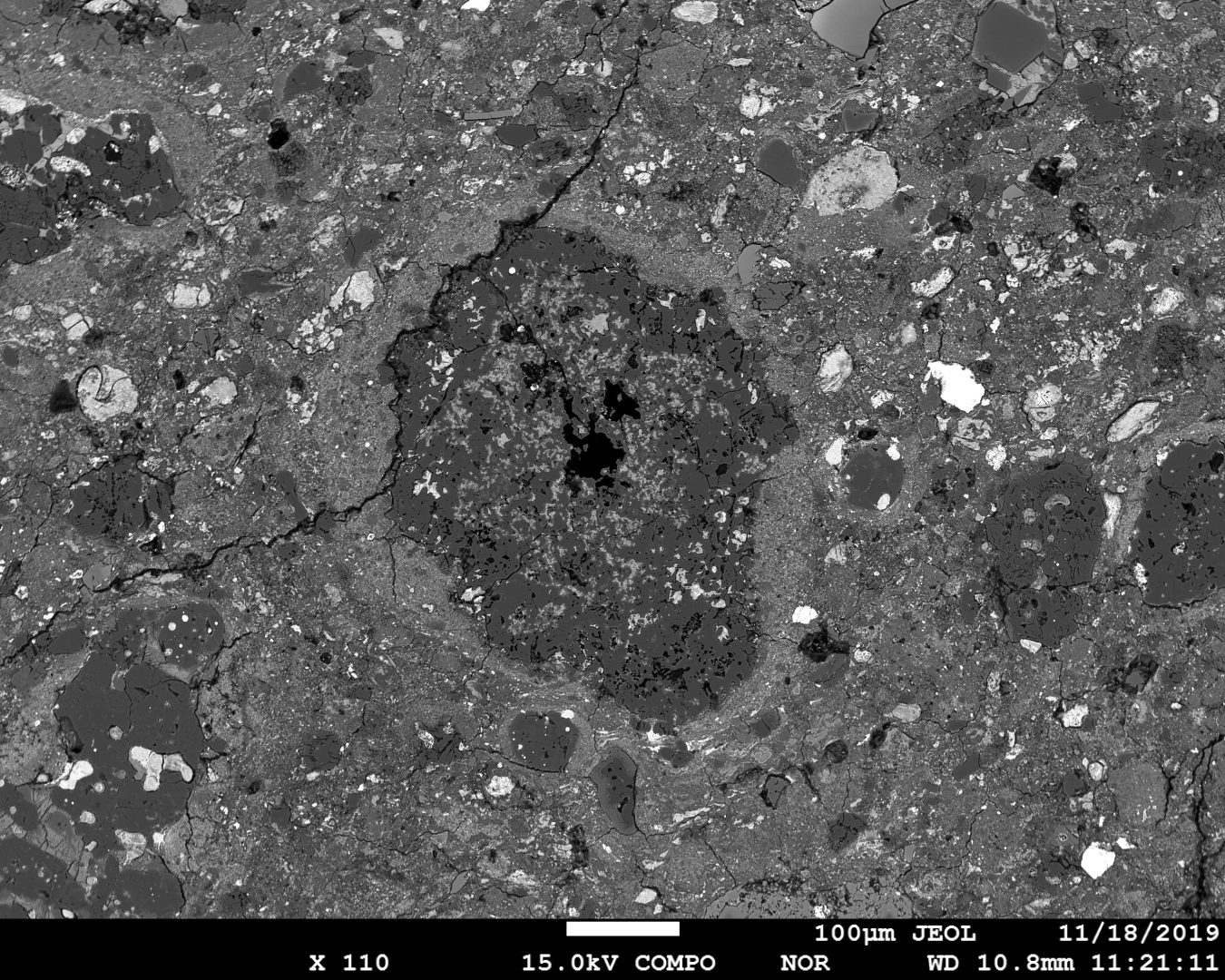Article: https://meteorites.asu.edu/news/researcher-spotlight-xeynab-mouti
Get to know Center researchers with this periodic feature!
Xeynab Mouti is an undergraduate student at ASU doing research in the Center for Meteorite Studies (CMS) and a 2020/2021 NASA Space Grant Intern alumni. Mouti is studying for a major in microbiology and minors in geological sciences, Arabic studies, and Italian. Her research in CMS focuses on the study of a primitive group of meteorites, the Mighei-like carbonaceous (CM) chondrites, which remain relatively unaltered since they formed in the early Solar System ~4.5 billion years ago.




